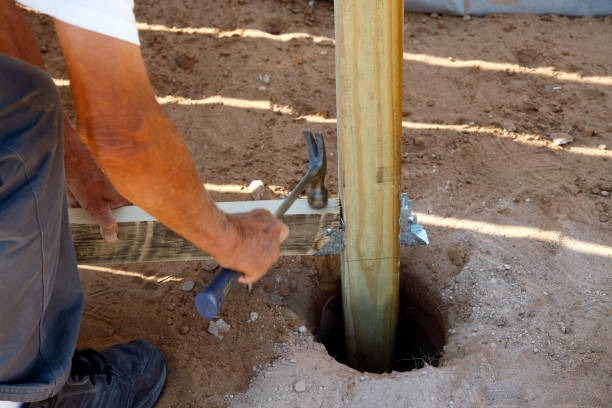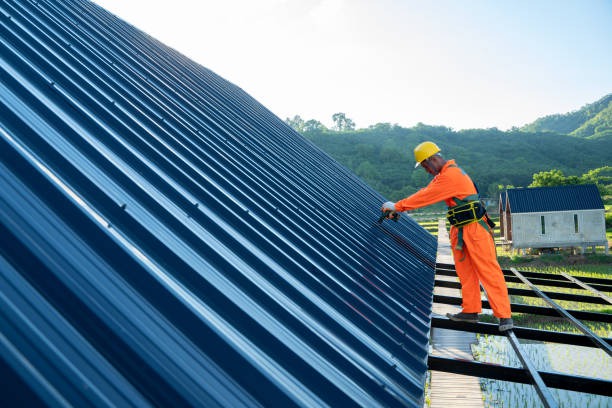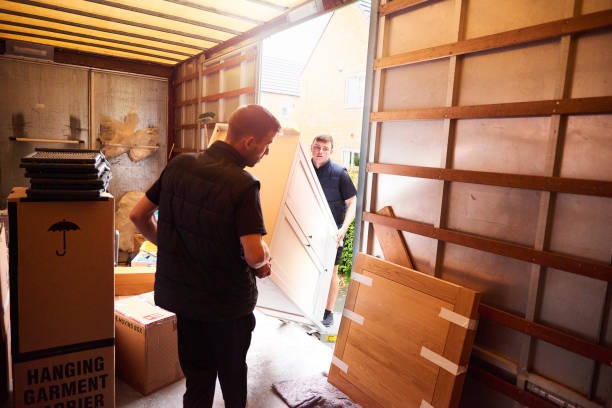Choosing the right fence company is essential for privacy, security, and curb appeal, but it can be overwhelming with so many options available. This guide simplifies the process, offering tips on verifying credentials and evaluating materials to help you hire a trustworthy team. With these insights, you’ll feel confident navigating the selection process and making the best investment for your property. Follow this roadmap to ensure your fence meets all your needs.
Figure Out Your Fencing Needs
First things first—before you even start talking to fence companies, it’s important to identify exactly what you’re looking for. This means assessing your reasons for getting a fence. Are you hoping for more privacy, added security, or perhaps just a decorative touch? Do you have pets or children that need to be kept in (or out)? Consider your property’s layout, neighborhood rules, and your ultimate goals.
Ask Yourself These Questions
-
Why do I need a fence? (Privacy, security, aesthetics)
-
What’s my budget?
-
Do I want a particular material—wood, vinyl, metal, composite, or chain link?
-
Are there HOA rules or city regulations that limit my choices?
-
When do I want the fence installed?
Knowing these answers makes it easier to communicate your needs and compare companies accurately during your search.
Start Your Search With Research
Once you know what you want, it’s time to start digging into your options. Resist the urge to settle for the first name that pops up online! Instead, look for well-reviewed companies with a solid presence in your area.
How to Track Down Top Companies
-
Read Google and Yelp reviews
-
Check social media pages for recent projects
-
Ask friends, family, or neighbors for recommendations
-
Look through local community forums or Facebook groups
-
Review professional association websites for member lists
A company’s reputation is often a telltale sign of the kind of experience you’ll have, so don’t skip this step!
Check Credentials and Insurance
No matter who you hire, working with a properly licensed and insured fence company protects you from headaches down the road. Fence installation might look simple, but it involves technical skills and specialized equipment. Make sure the company meets all legal and safety requirements in your area.
What to Ask For
-
State and local business licenses
-
General liability insurance
-
Workers’ compensation coverage
-
Copies of any special certifications or accreditations
If a company hesitates to provide proof of insurance or licensing, that’s a big red flag. It’s better to walk away now than risk legal or financial trouble later!
Review Previous Work and Projects
Seeing is believing. Ask each fence company to show you photos or in-person examples of recent installations. Many reliable companies will have a portfolio ready for you to review, ranging from sprawling perimeter fences to cozy backyard enclosures.
How to Evaluate Past Projects
-
Look for neat, level, and consistent installations
-
Check that all gates hang straight and swing smoothly
-
Assess the overall quality of materials and finishes
-
Notice the attention to landscaping and cleanup
The more examples you see, the easier it’ll be to spot quality work and set realistic expectations.
Ask About Materials and Workmanship Guarantees
One of the most important factors that separates a trustworthy fence company from the rest is the quality of the materials they use. You want your investment to last for years, so find out exactly what you’re getting before you sign a contract.
Questions to Ask About Materials
-
What types of wood, vinyl, or metal do you use?
-
Are your materials resistant to weather, insects, and rot?
-
Do you offer eco-friendly or sustainable options?
-
Who are your suppliers?
Don’t Forget About Warranties
-
How long do material warranties last?
-
What does your workmanship guarantee cover?
-
How do you handle repairs or replacements if problems arise?
Durable materials and a strong warranty program are markers of a company that stands behind its work.
Get Detailed and Transparent Quotes
A reliable fence company will never hide costs or pressure you into on-the-spot decisions. Instead, they’ll provide you with a clear, itemized quote that breaks down all anticipated expenses.
What a Good Quote Includes
-
Type and length of fencing
-
Material and labor costs
-
Permit fees (if needed)
-
Timeline for installation
-
Any optional upgrades (gates, finishes, automation)
-
Payment schedule and terms
Don’t be afraid to request quotes from multiple companies so you can compare prices, materials, and terms side-by-side.
Gauge Communication and Customer Service
You deserve a smooth, stress-free fence installation experience! That means great communication from start to finish. Reliable companies will take the time to answer your questions, explain your options, and address your concerns promptly.
Signs of Excellent Customer Service
-
Prompt responses to phone calls and emails
-
Honest, straightforward answers to your questions
-
Willingness to provide references upon request
-
Clear explanations of delays, issues, or project changes
How you feel during your first few interactions is usually a good predictor of the overall experience you’ll have.
Understand the Installation Process
Some fencing projects are straightforward, while others are more complex. Either way, it’s important to understand the steps involved so you can plan accordingly and make sure your chosen company follows best practices.
Typical Steps in Fence Installation
-
On-site measurement and property survey
-
Review of property lines and utility locations
-
Permit applications, if needed
-
Preparation of the ground and materials
-
Setting posts and panels (or other fence types)
-
Gate installation and alignment
-
Final walkthrough, cleanup, and inspection
Ask the company for a projected start and finish date. Clarify who is responsible for handling permits and marking underground lines.
Don’t Forget About Style and Curb Appeal
A fence isn’t just a practical addition; it’s also a major component of your home’s appearance. With so many options on the market today, you deserve something that enhances your landscape and matches your taste.
When discussing your project, consider how modern options, such as stylish vinyl fences, can blend low maintenance with a sleek design. These fences offer durability and a fresh look while requiring very little upkeep—perfect for busy homeowners seeking a balance of function and aesthetics.
Ask for References
Before you make a final decision, ask each company for at least three references from past clients whom you can contact directly. It’s one of the simplest and most reliable ways to gauge what your experience might be like.
What to Ask References
-
Did the company stick to the timeline and budget?
-
Was the crew respectful and careful with your property?
-
Is the fence holding up well?
-
Would you hire this company again?
Talking directly with people who have been in your shoes is incredibly valuable when making your final decision.
Compare Value, Not Just Price
Remember, the cheapest quote isn’t always the best deal. Consider the entire value package—materials, reputation, warranty coverage, and after-installation service. Think long-term; a good fence company invests in your satisfaction and the longevity of your fence.
For example, working with experienced residential fence installers can mean the difference between a fence that lasts a few years and one that’s worry-free for decades. Their expertise can also help tailor solutions for sloping yards, challenging soil, or architectural details unique to your home.
Look for Trusted Local Businesses
There’s a special level of accountability that comes with hiring a neighborhood-based team. Unlike faraway contractors, a local fence company is invested in your community’s reputation and relies on word-of-mouth for new business. That’s why you often see faster communication, stronger warranties, and a sharper focus on good customer relationships compared to faceless out-of-town outfits.
Final Thoughts
Choosing a trustworthy fence company might take a bit of time, but it’s worth every minute. After all, a fence is an investment in your property’s safety, security, and beauty for years to come. By following these steps—clarifying your needs, thoroughly researching options, verifying credentials, and comparing quotes—you can confidently select a partner who will deliver top-notch results, not just promises.
So take your time, ask plenty of questions, and look for companies that combine experience, integrity, and professionalism. Your perfect fence—and peace of mind—are right around the corner!










